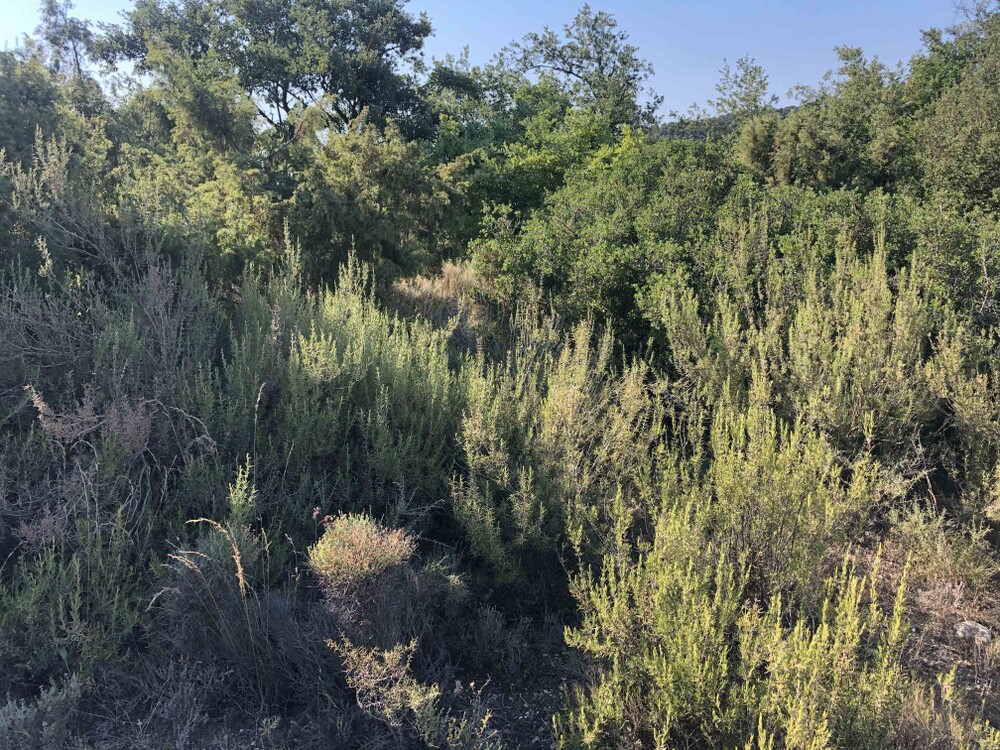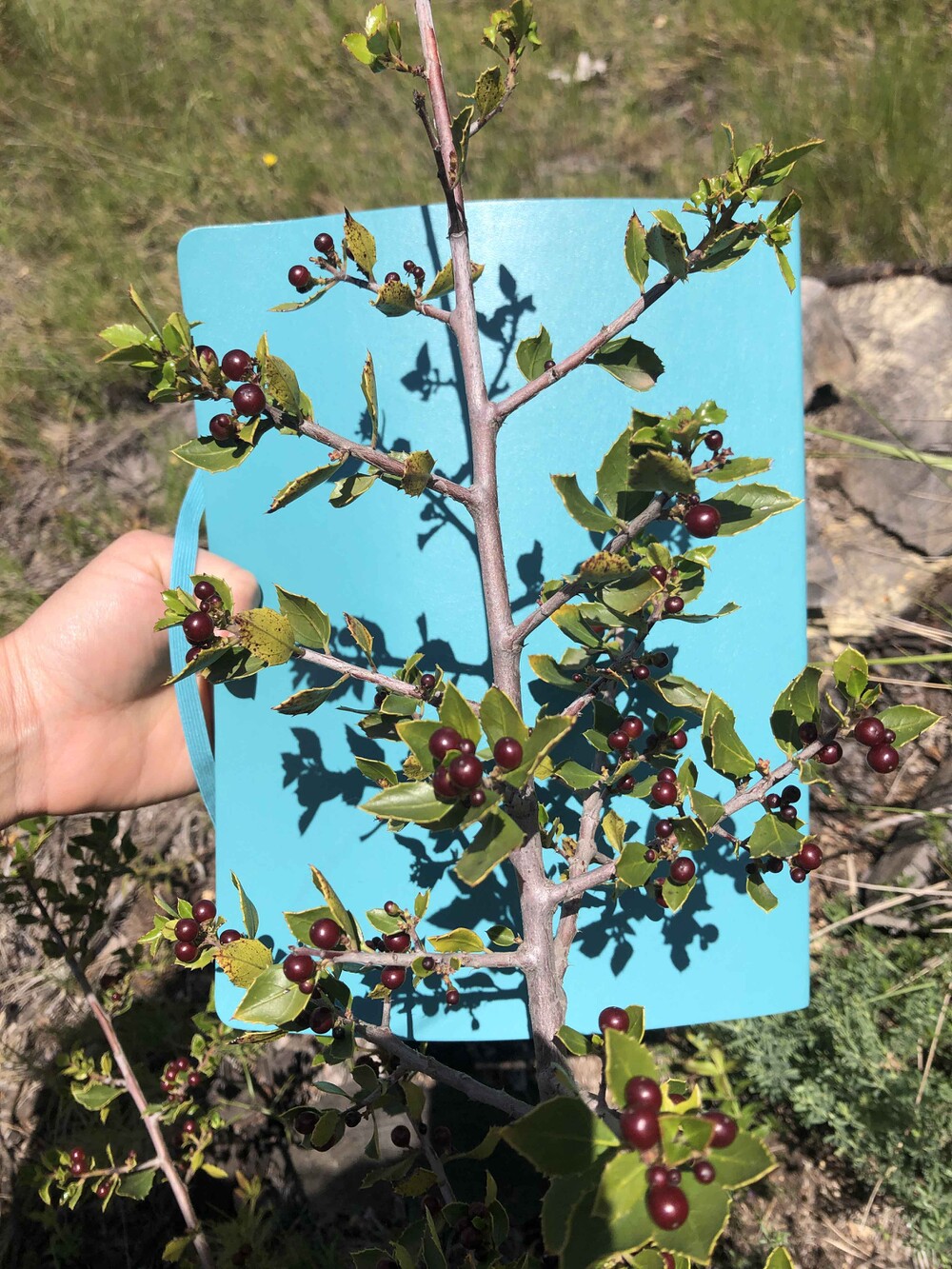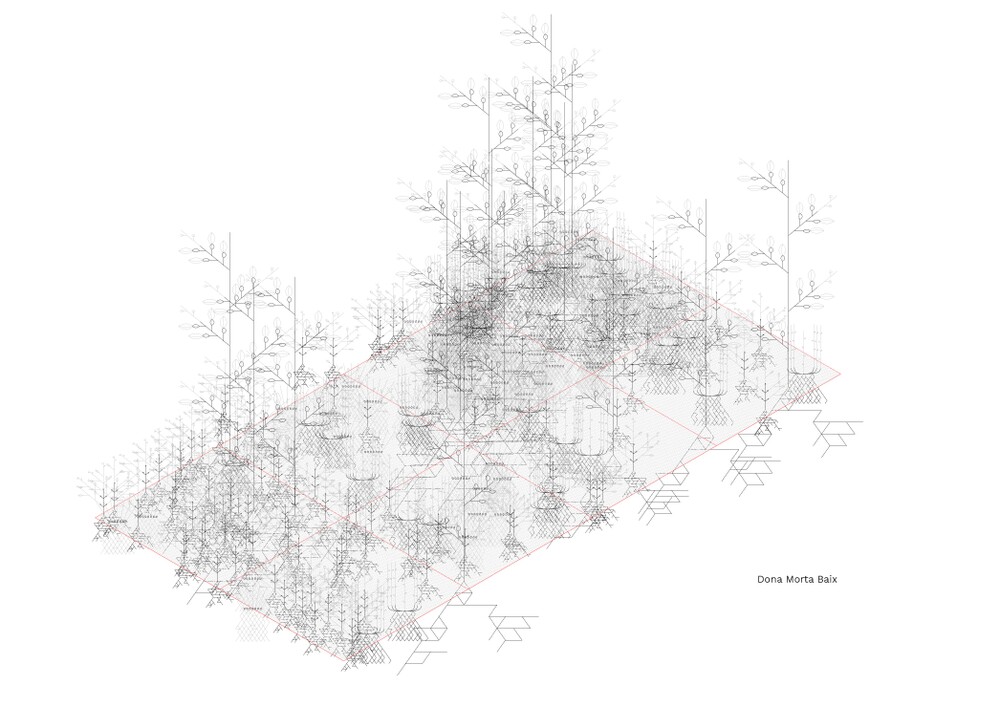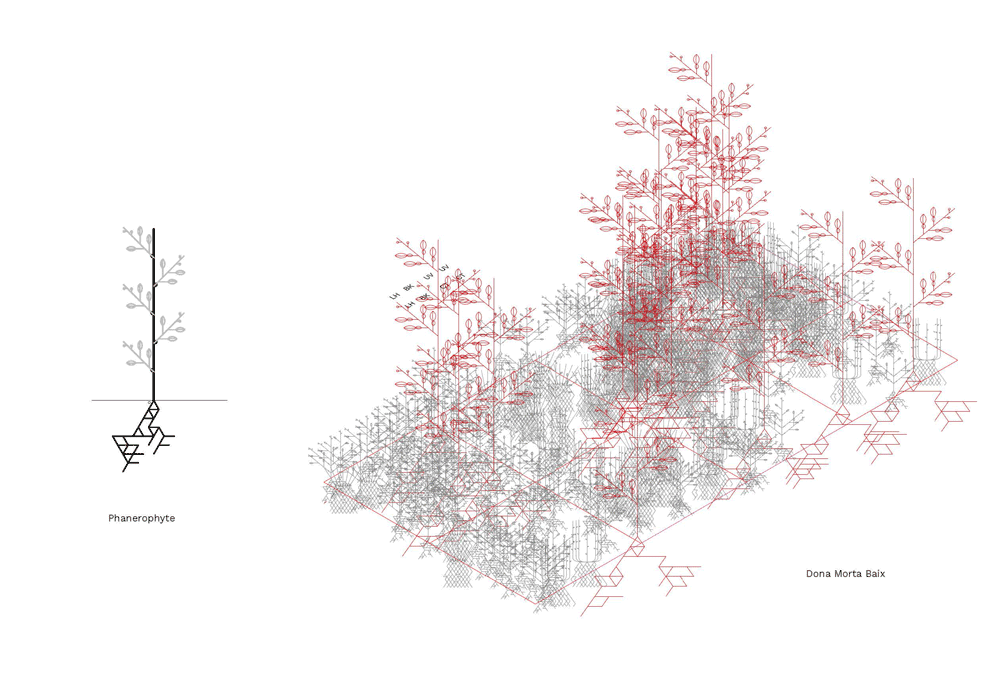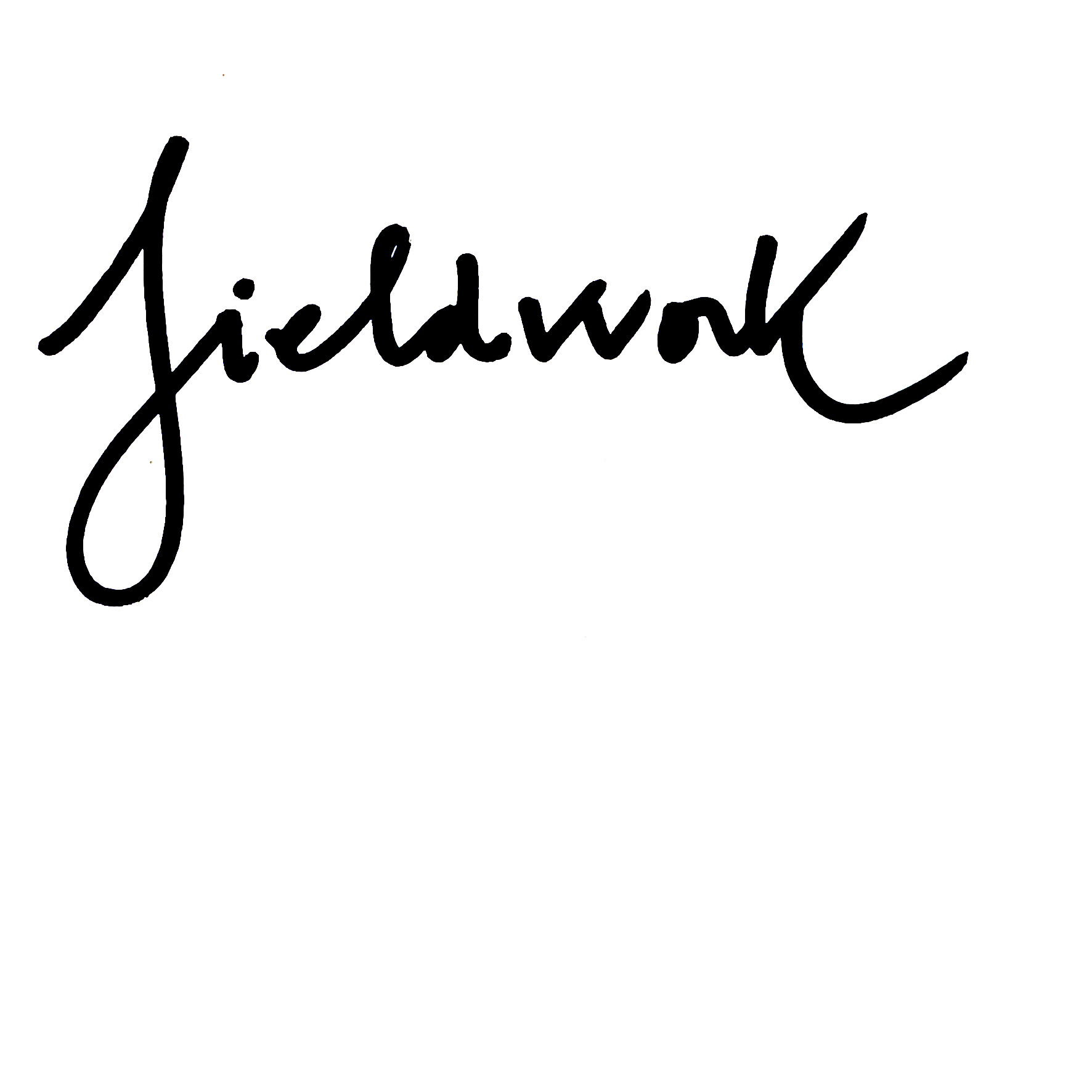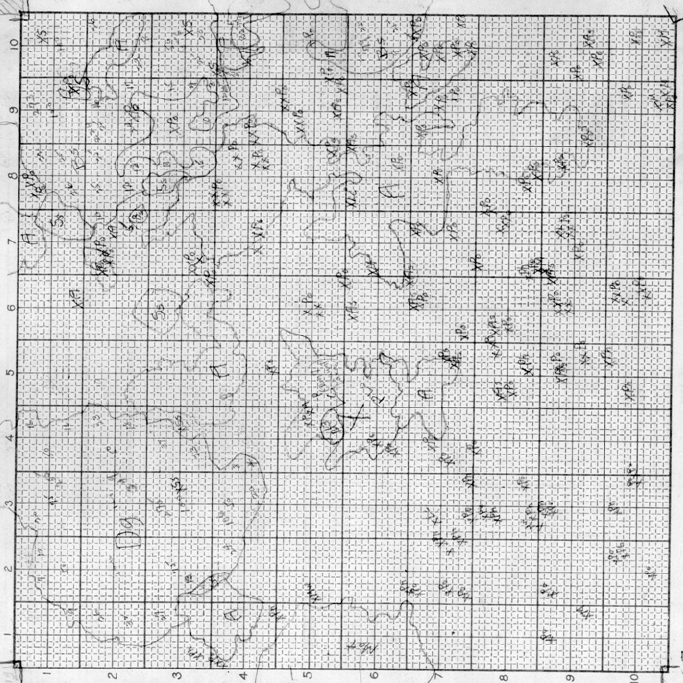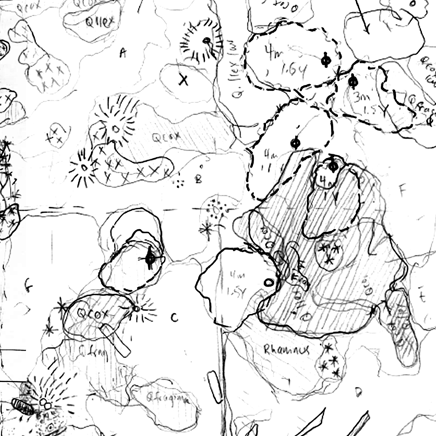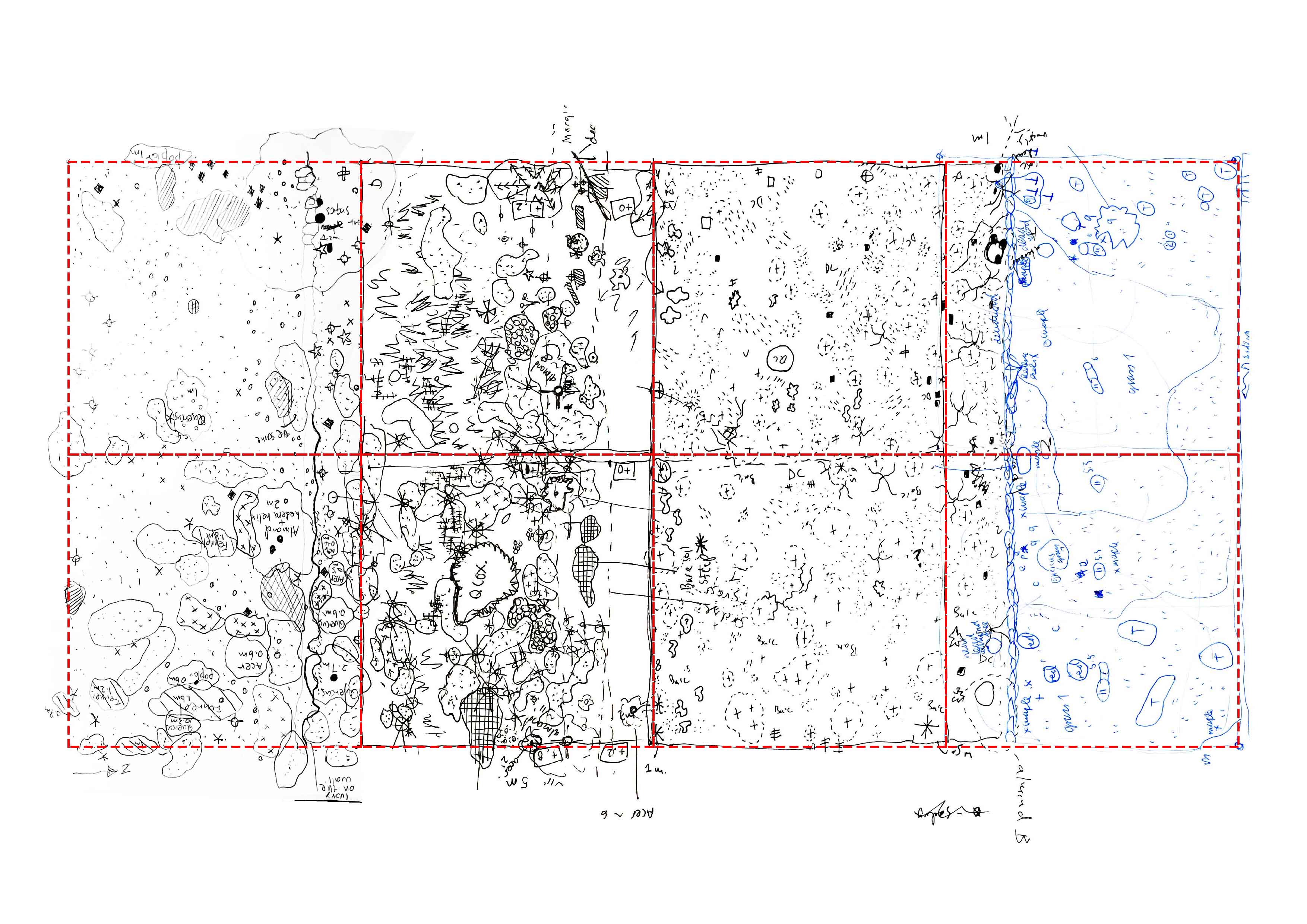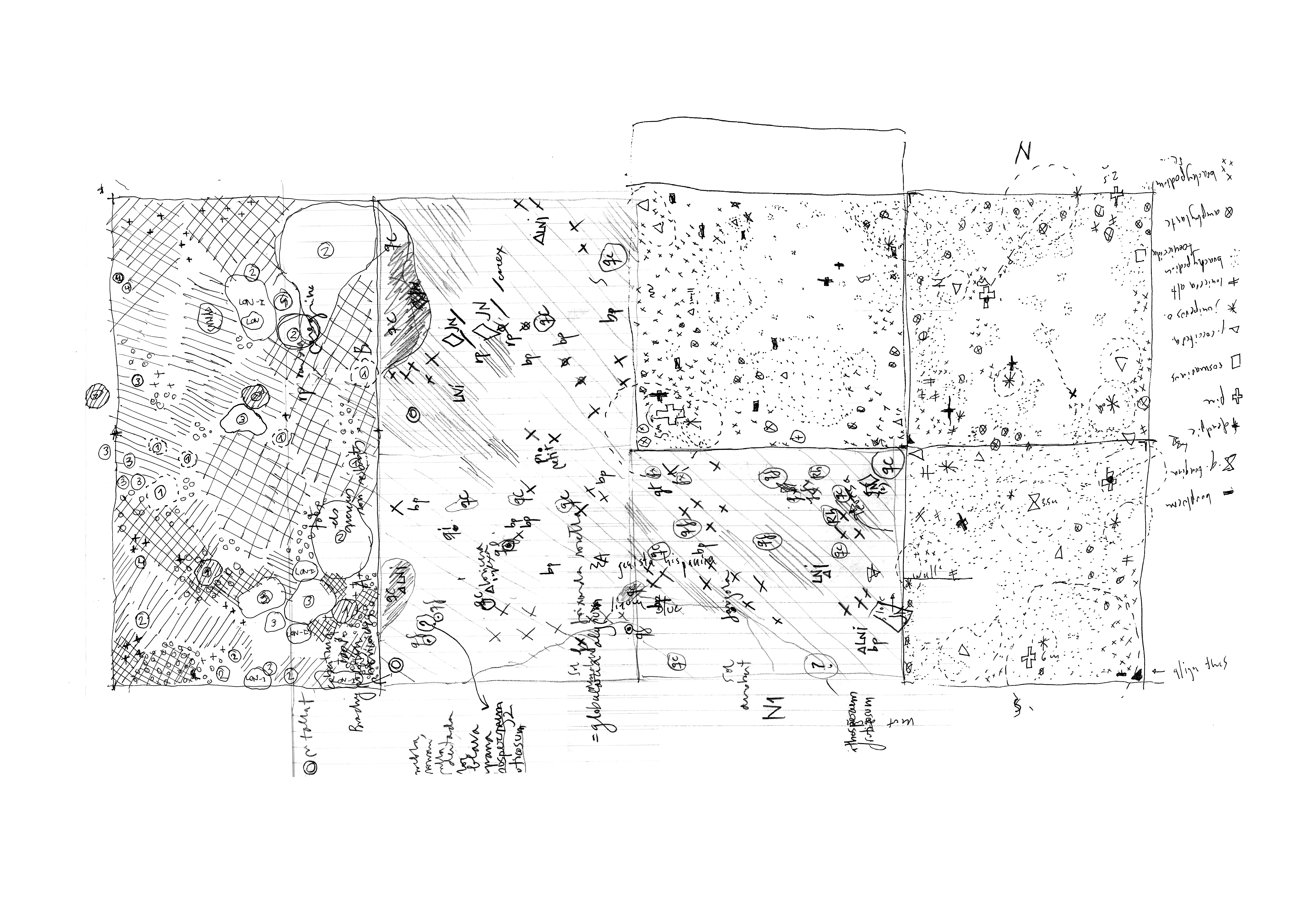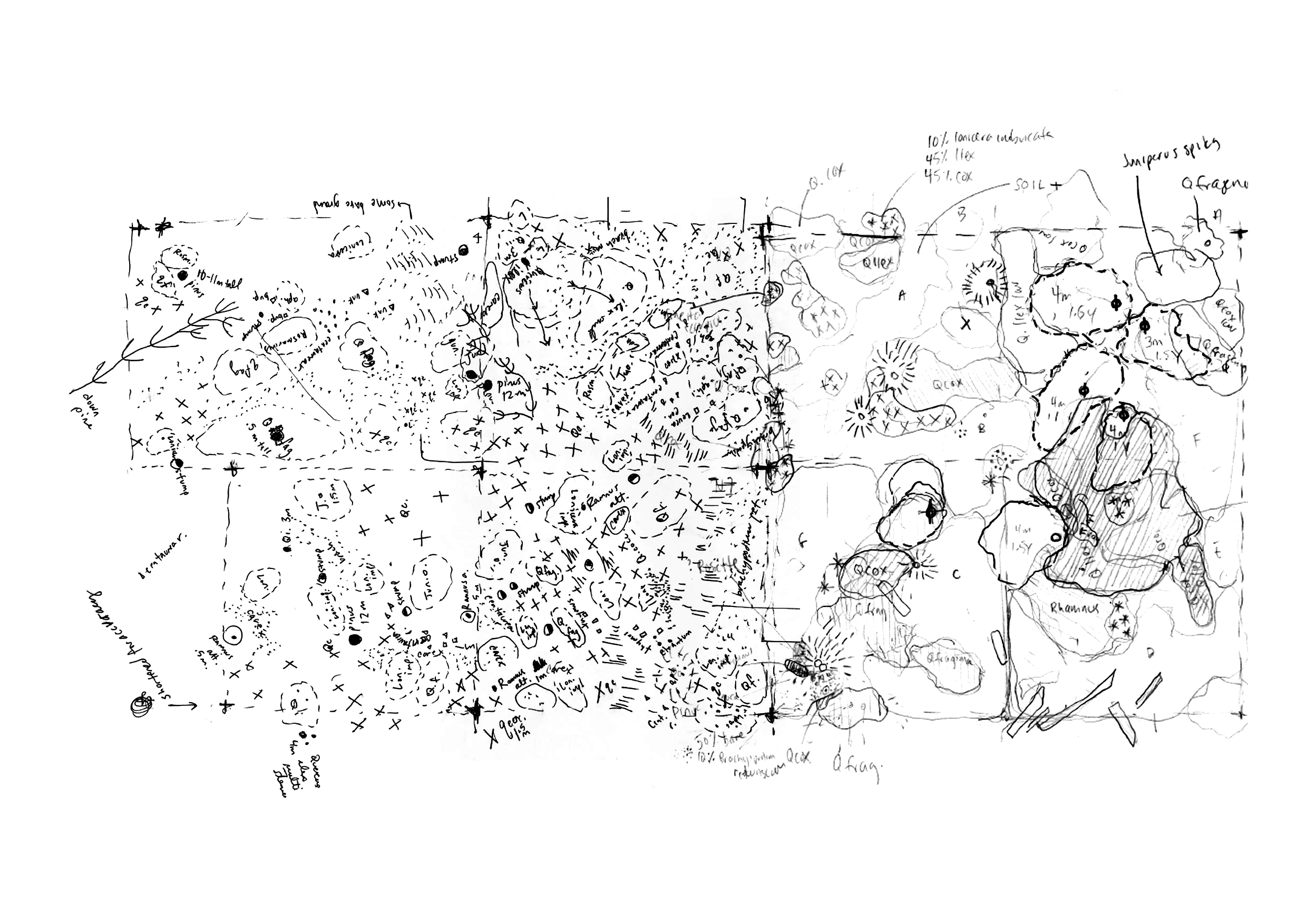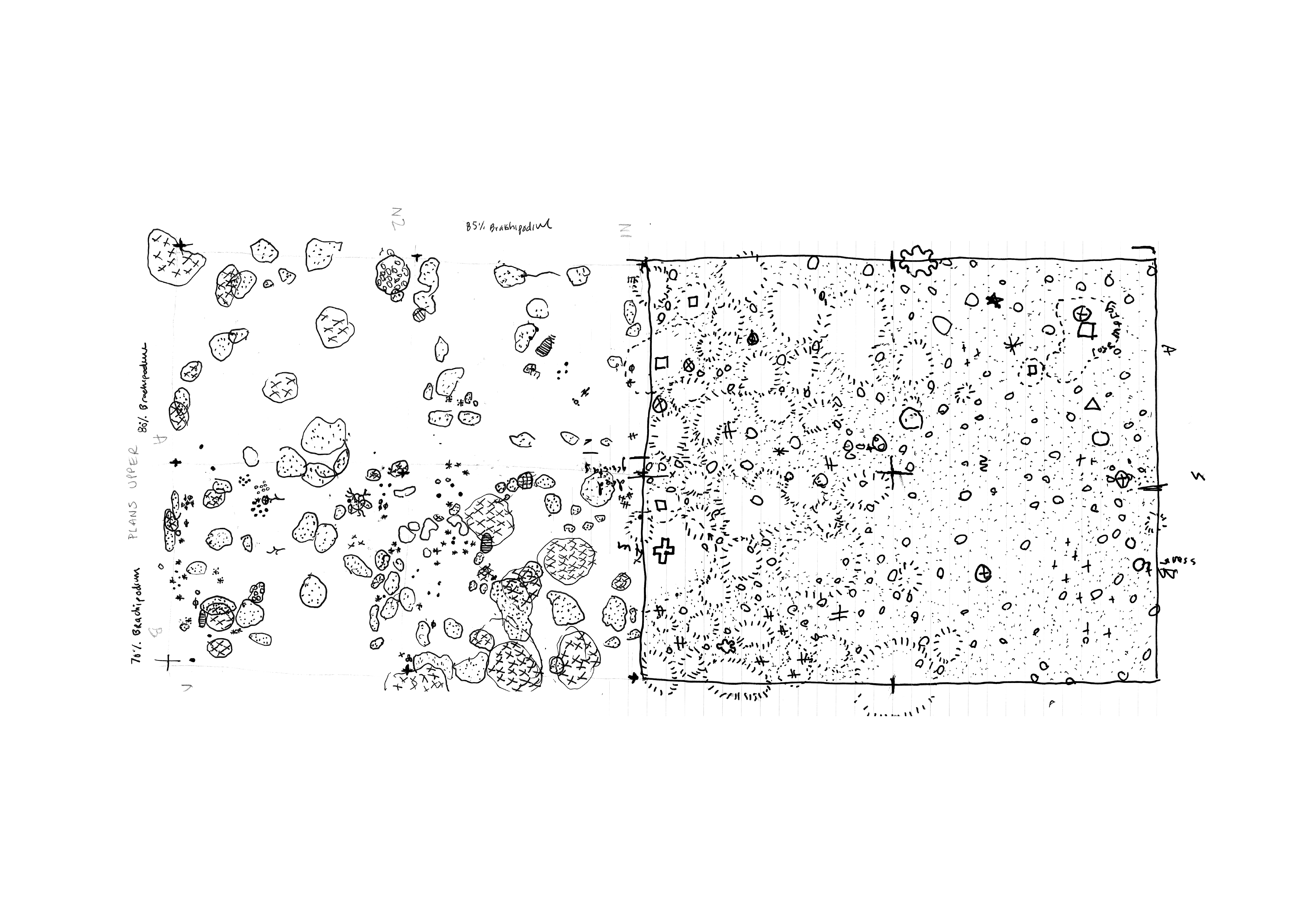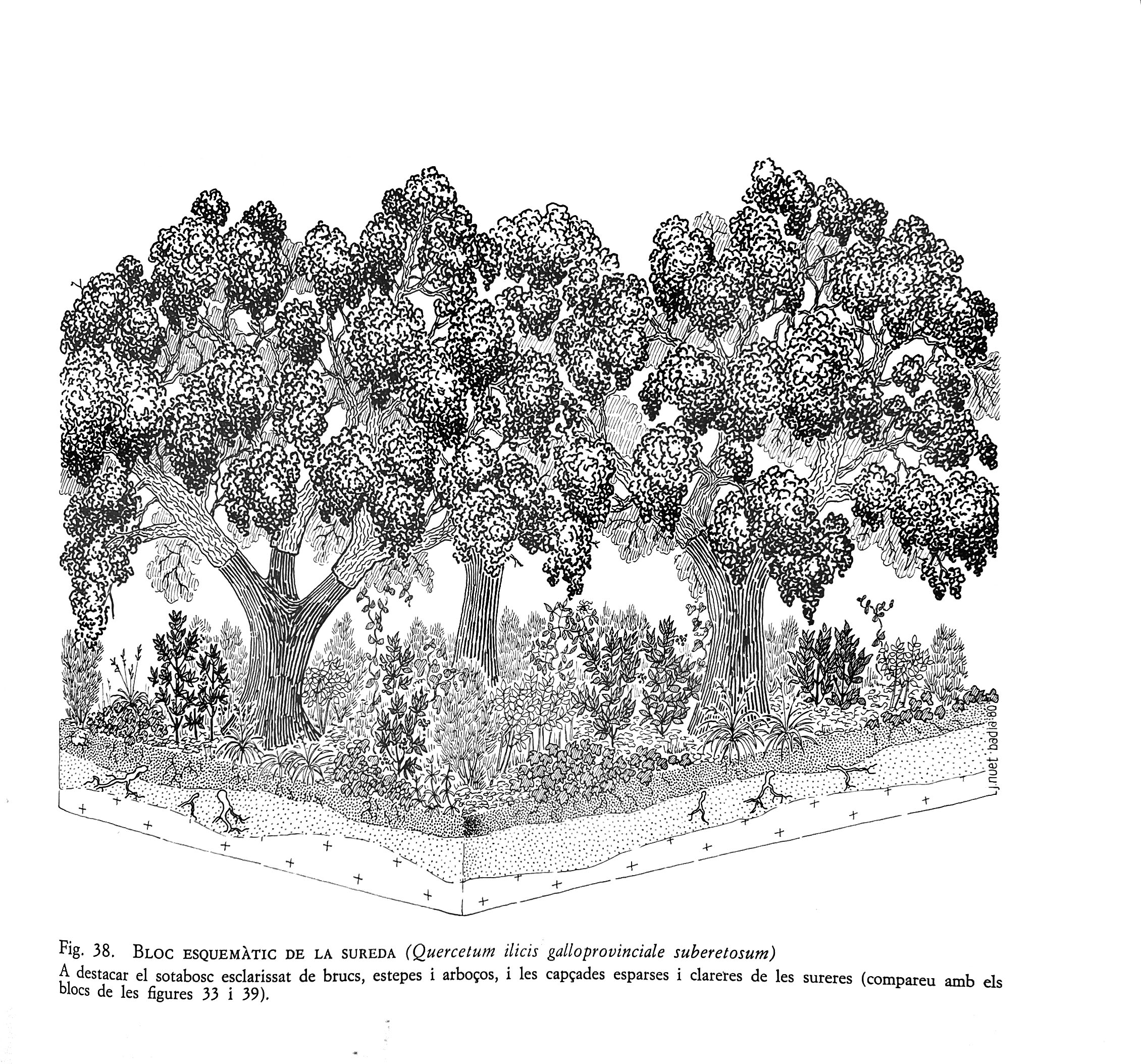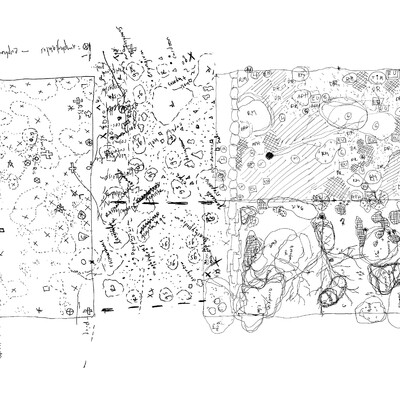
Vegetation survey: Dona Morta Baix
The test plot with a size of 10 x 20 meters of Dona Morta Baix is located in the middle of the south-west facing garden, where a stone wall separates an upper and lower terrace. The garden has only recently been abandoned by agriculture, so the land is not yet fully forested. However, the upper terrace is more overgrown with trees and shrubs due to its proximity to the adjacent forest of Dona Morta Up. It could also be that agricultural use on the upper terrace was abandoned longer ago than on the lower terrace.
The differences between the upper and lower terraces are the most striking observations for this plot which helped to understand the succession of the site. The upper terrace is more evolved in its natural succession and in its consequence, more tree and shrub species could have been found compared to the lower terrace. This means that it is in a condition where Pinus halapensis is the main tree species. The trees are still small and thus the canopy is not well developed. The shrub layer is prominent, which is mainly composed of Rosmarinus officinalis and Genista scorpius.
In the lower part, much less Rosmarinus officinalis and Genista scorpius have been found and the plot consists of more grass and herbaceous plants. No Pinus halapensis was found either, but all Brachypodium sp. and Rhamnus alaternus were found in the lower part. In total, the team counted 29 specimens of the light-demanding Quercus coccifera, which also occurs mainly in the lower part.
Rosmarinus officinalis and Rhamnus altaternus (with the blue book in the back) in the garden of the XXI century in Senan. Source: Chair of Being Alive, 2021.
In the herbaceous layer, the most dominant species is the grass Brachypodium sp. It covers around 25 % of the test plot. Other common species are Dorycnium pentaphyllum (15.1%), Genista sp. (7.5%) and Aphyllanthes montspeliensis (3.6%). There is little bare ground at the bottom of the plot, although photos from the summer show that there is bare ground between plants.
Looking at the distribution of plant life forms, most of the species in the Dona Morta Baix site are classified as chamaephytes and hemycryptophytes. This highlights the shrubby character of the upper part of the garden and the herbaceous of the lower part, which is also adjacent to a forest and grassland, respectively. When agricultural use ceases, Rosmarinus officinalis and Quercues coccifera will take over. Only after years will these species disappear under the canopy of Pinus halapensis.
Compared to the other plots recently abandoned by agriculture, namely Jorba and Pla del Pouet Dalt, the test plot shows a similar pattern with few trees and shrubs dominated by grasses and herbaceous plants. However, since this plot faces southwest and Jorba faces north, the vegetation shows plants that prefer these hot and dry conditions, such as the strong dominance of Rosmarinus officinalis. A total of 19 species were found in the entire plot, which occupies well over a third of the total area. Some species occur only in this plot or could not be found in the other test plots. These include Erica multiflora, Thymus vulgaris and Globularia alypum.



